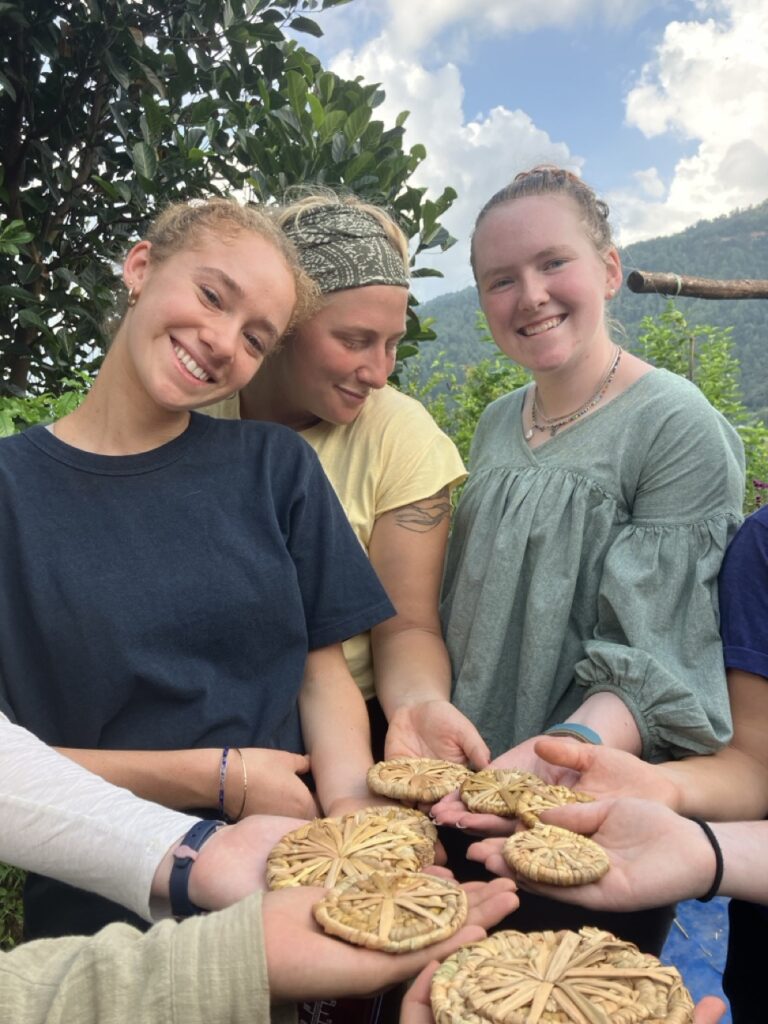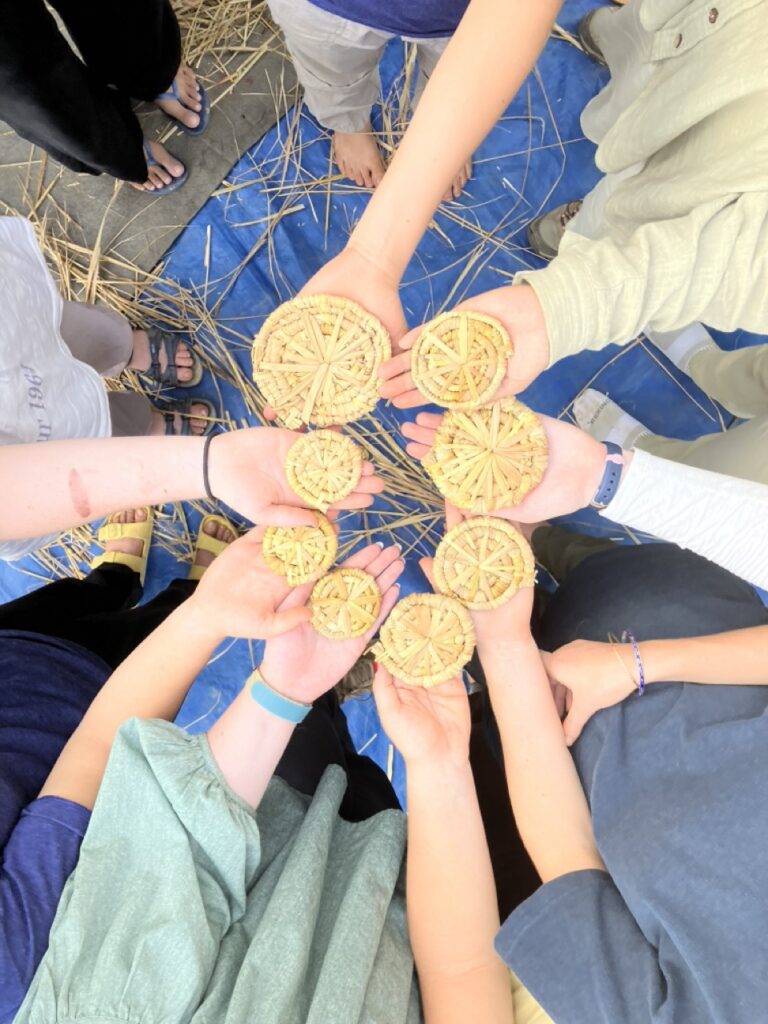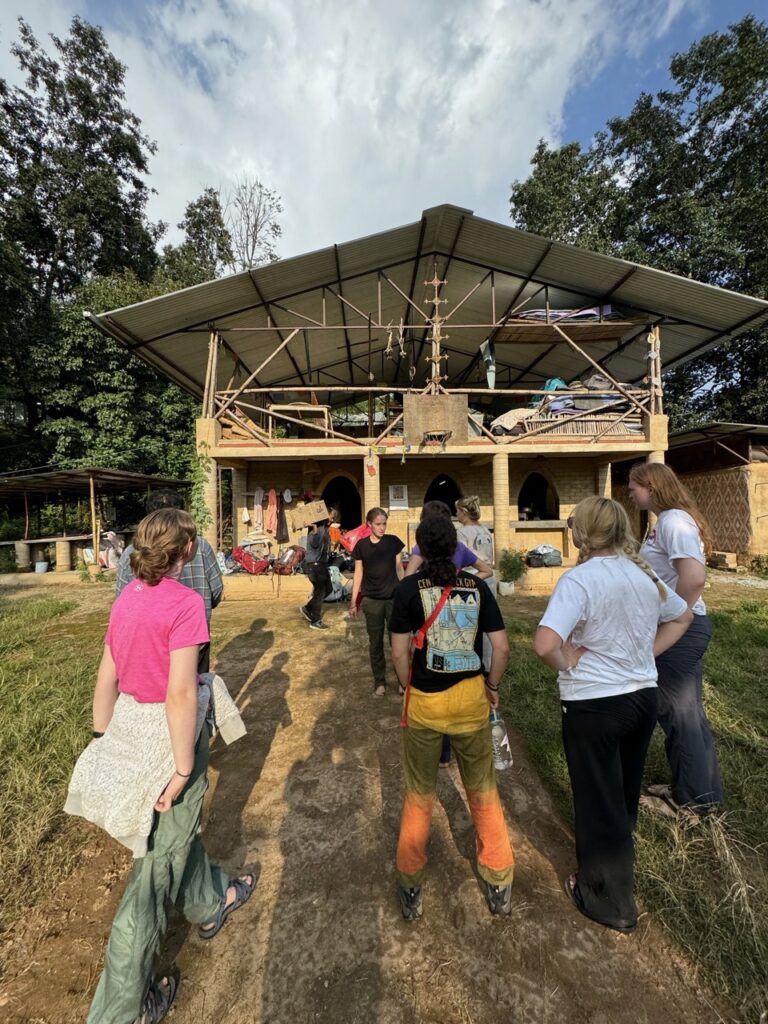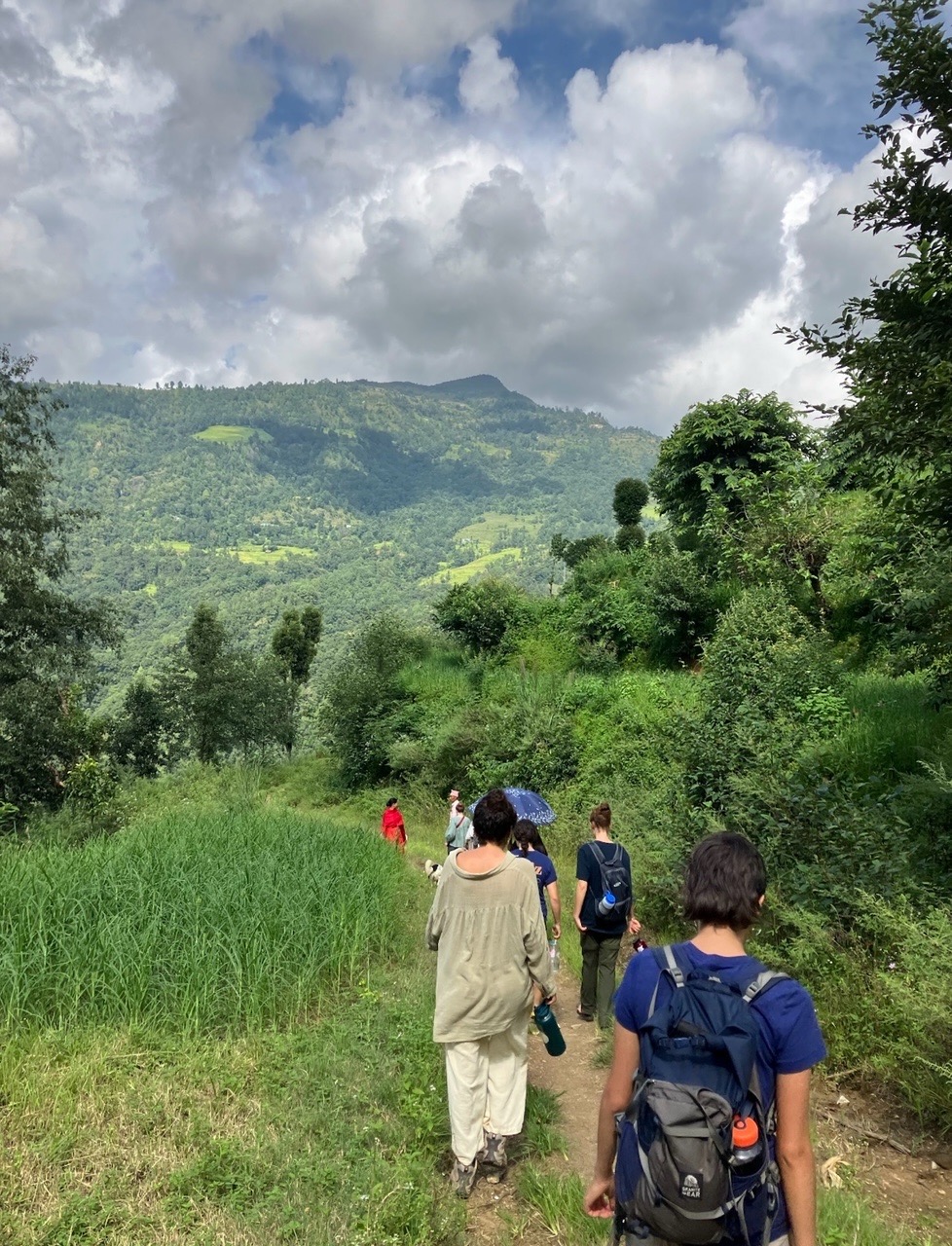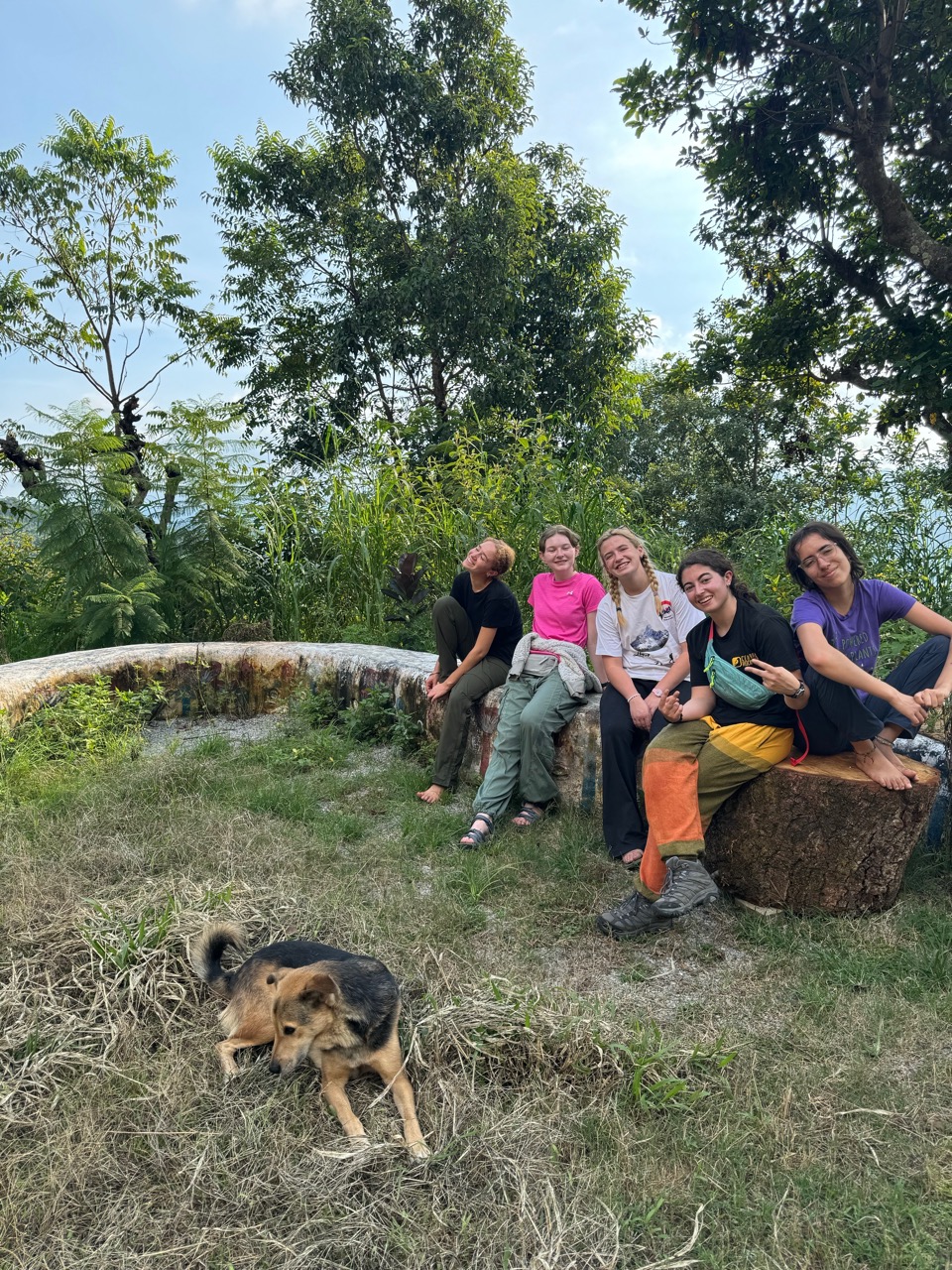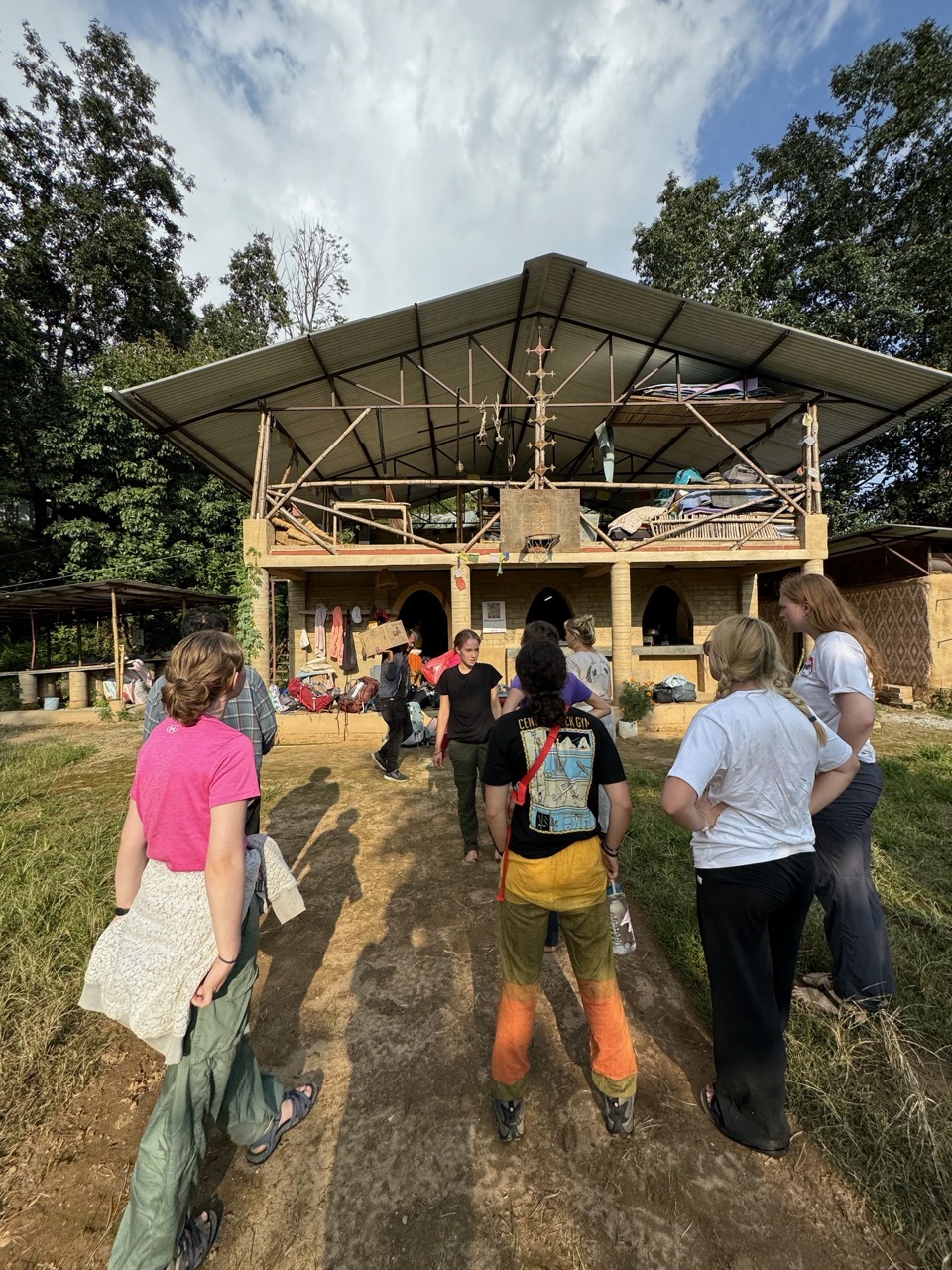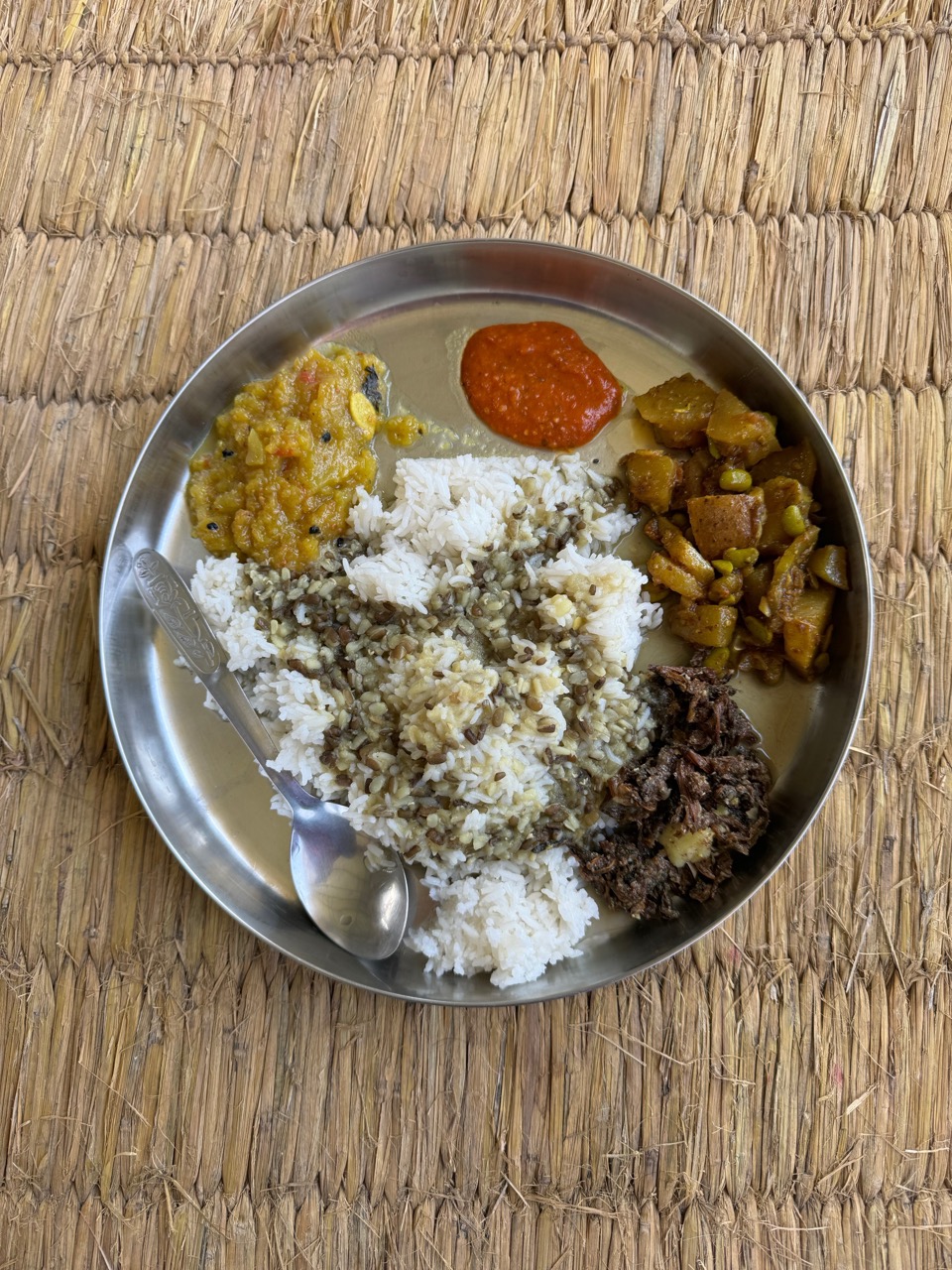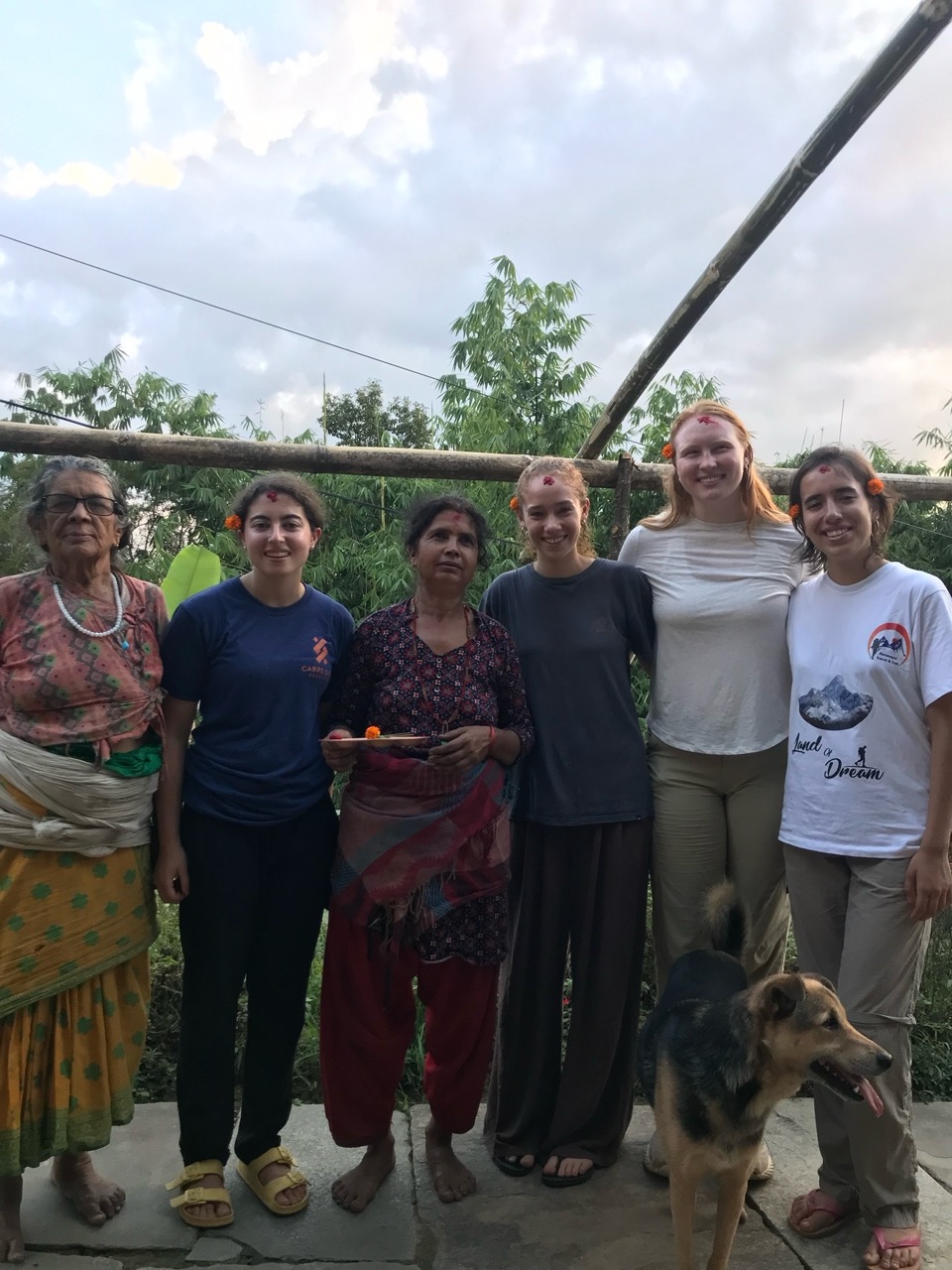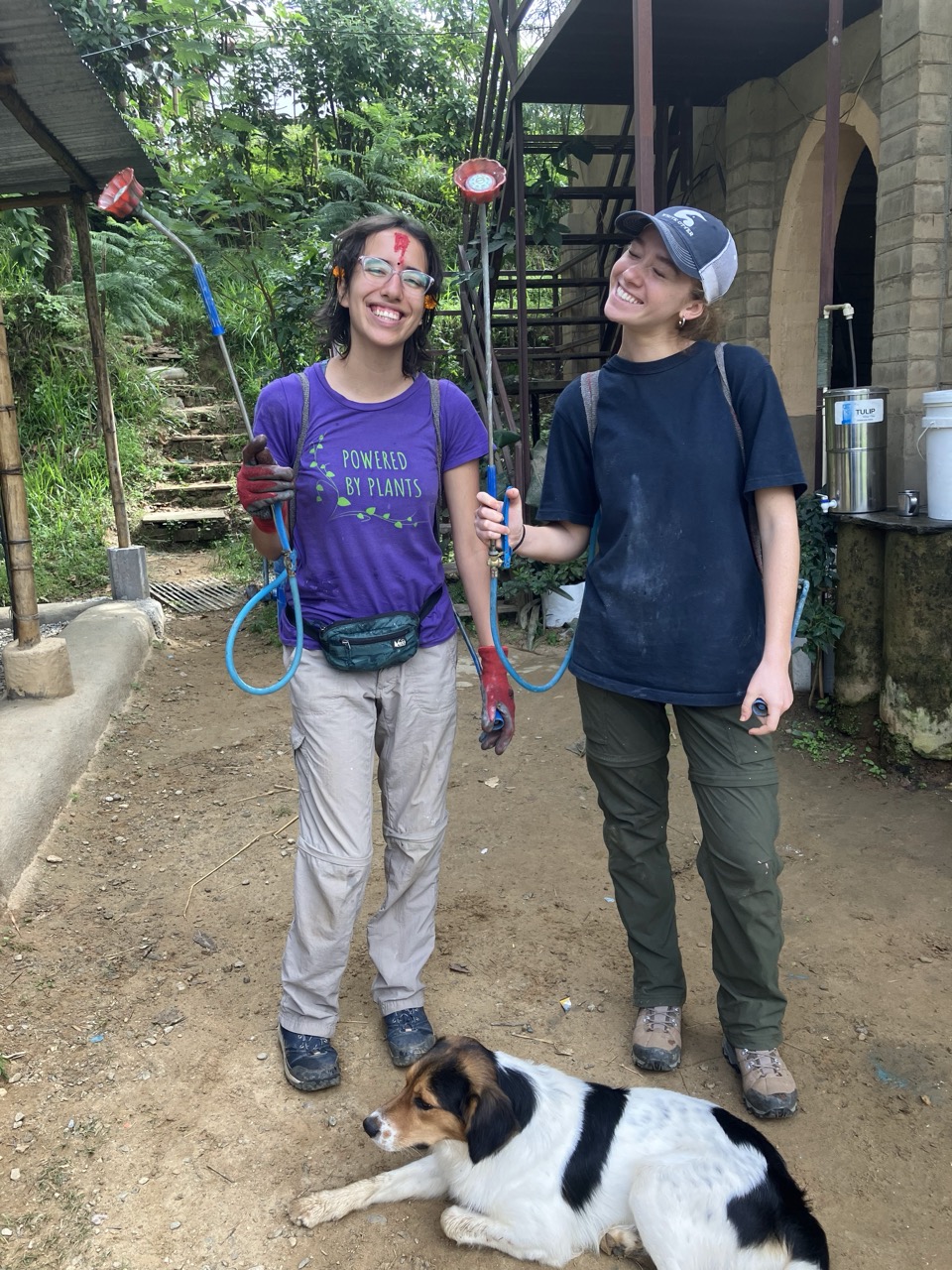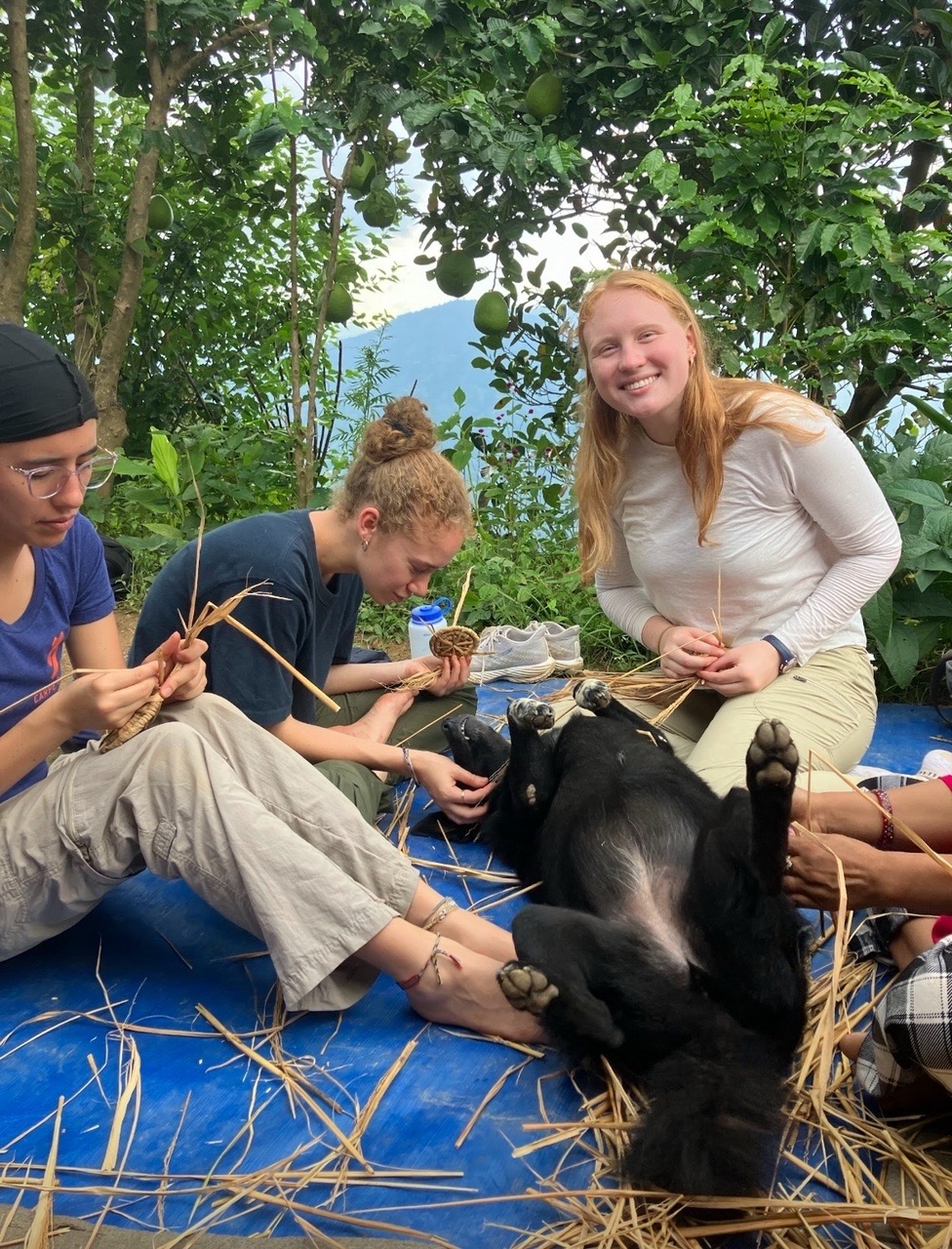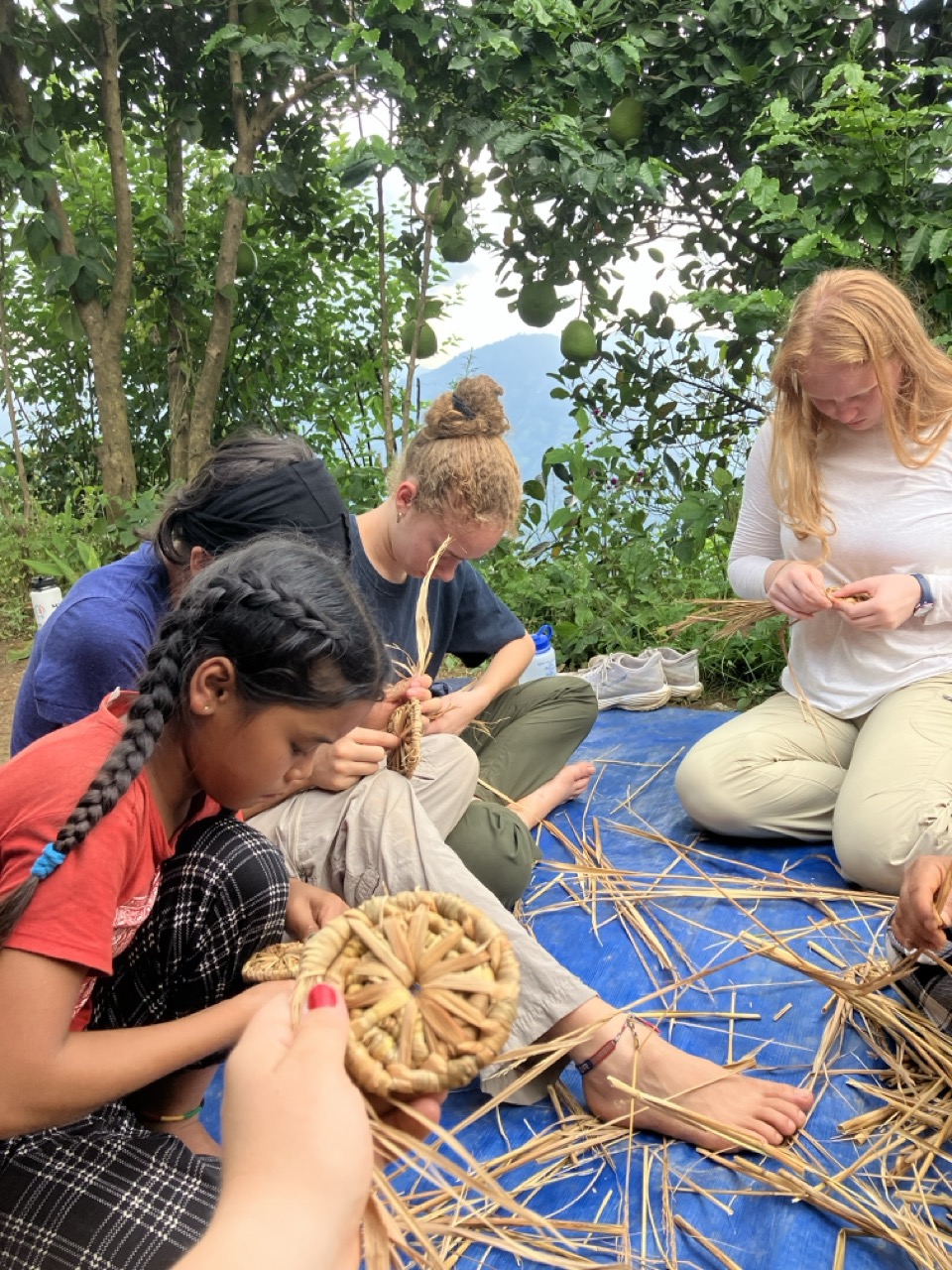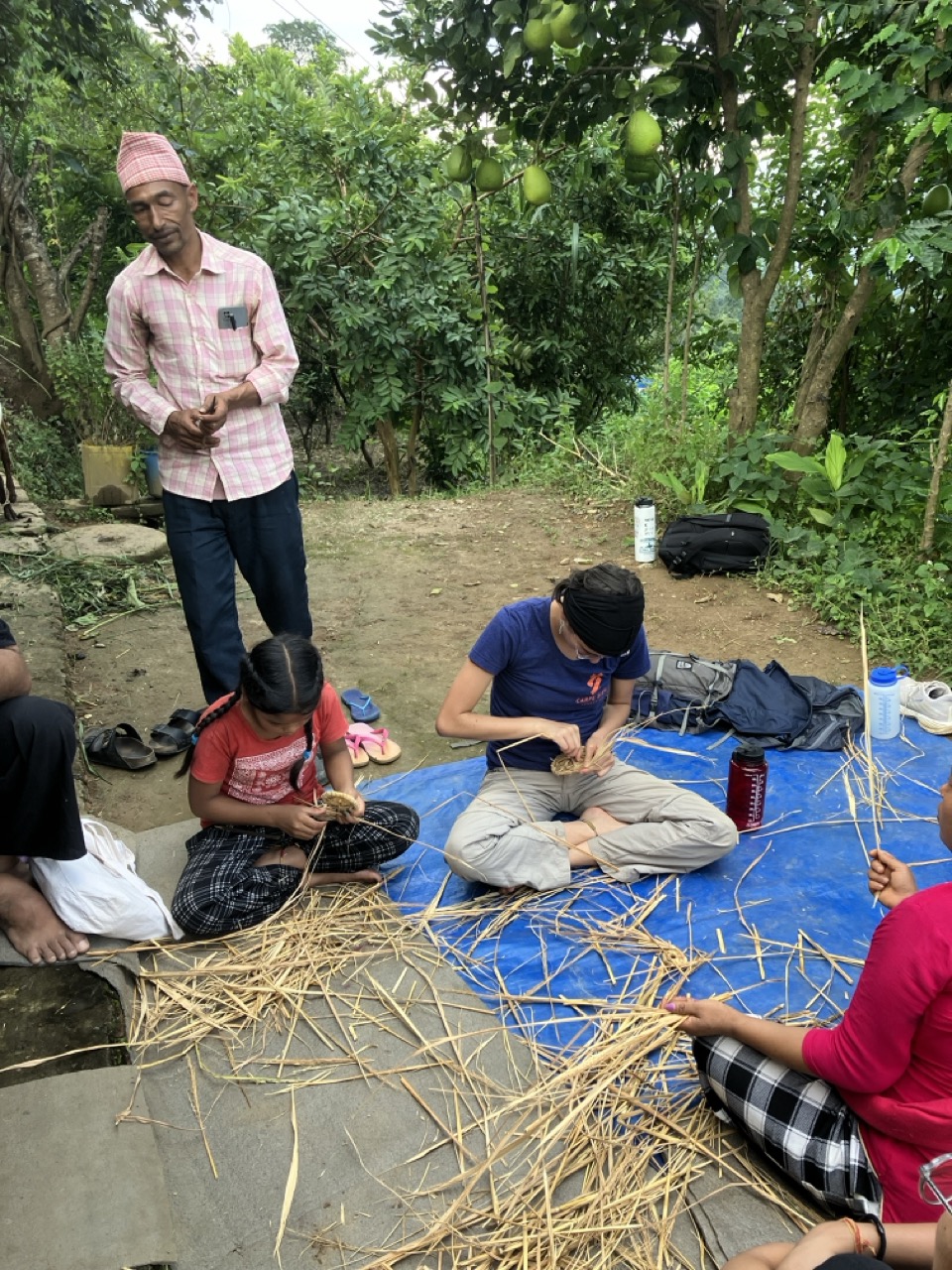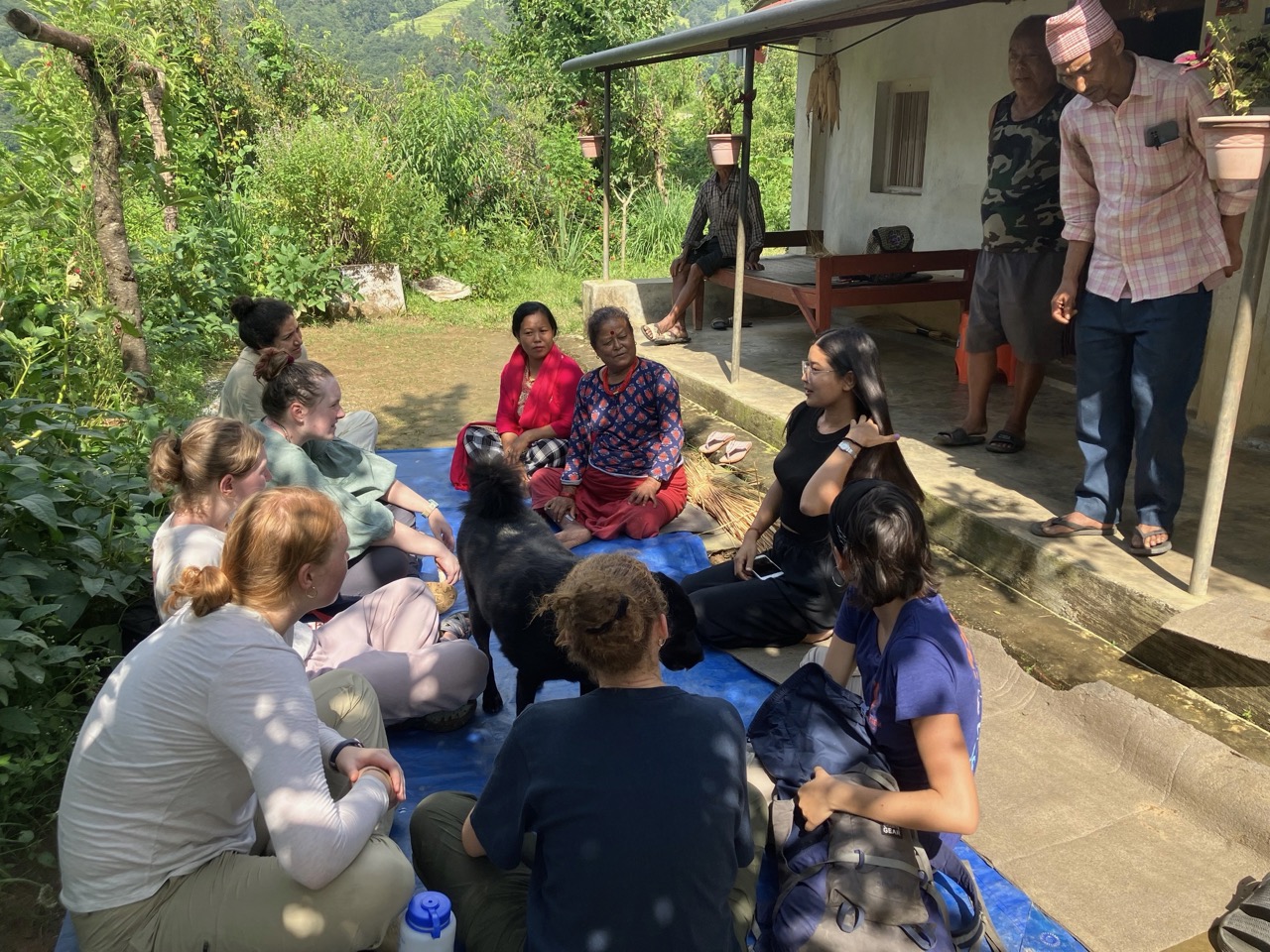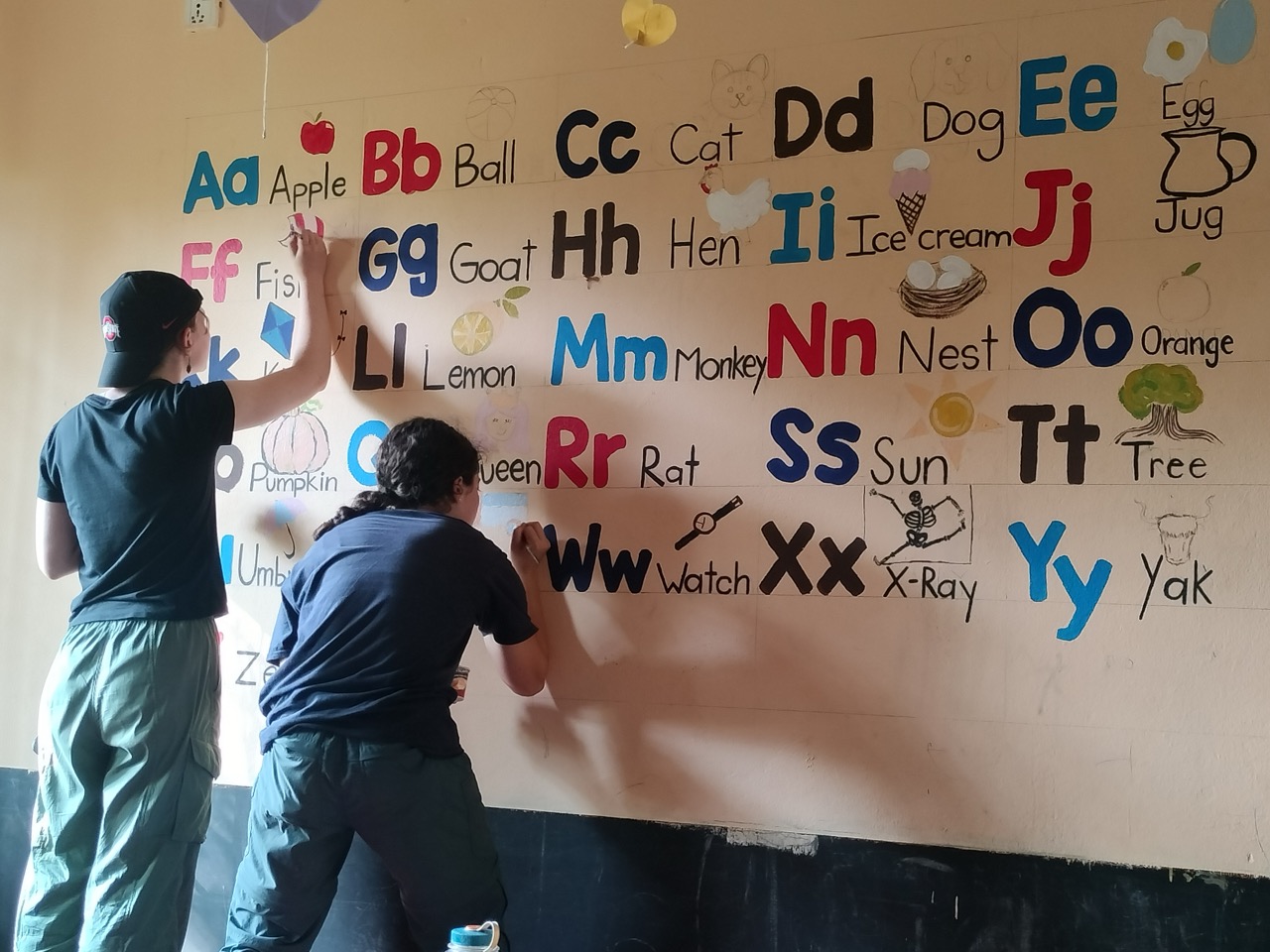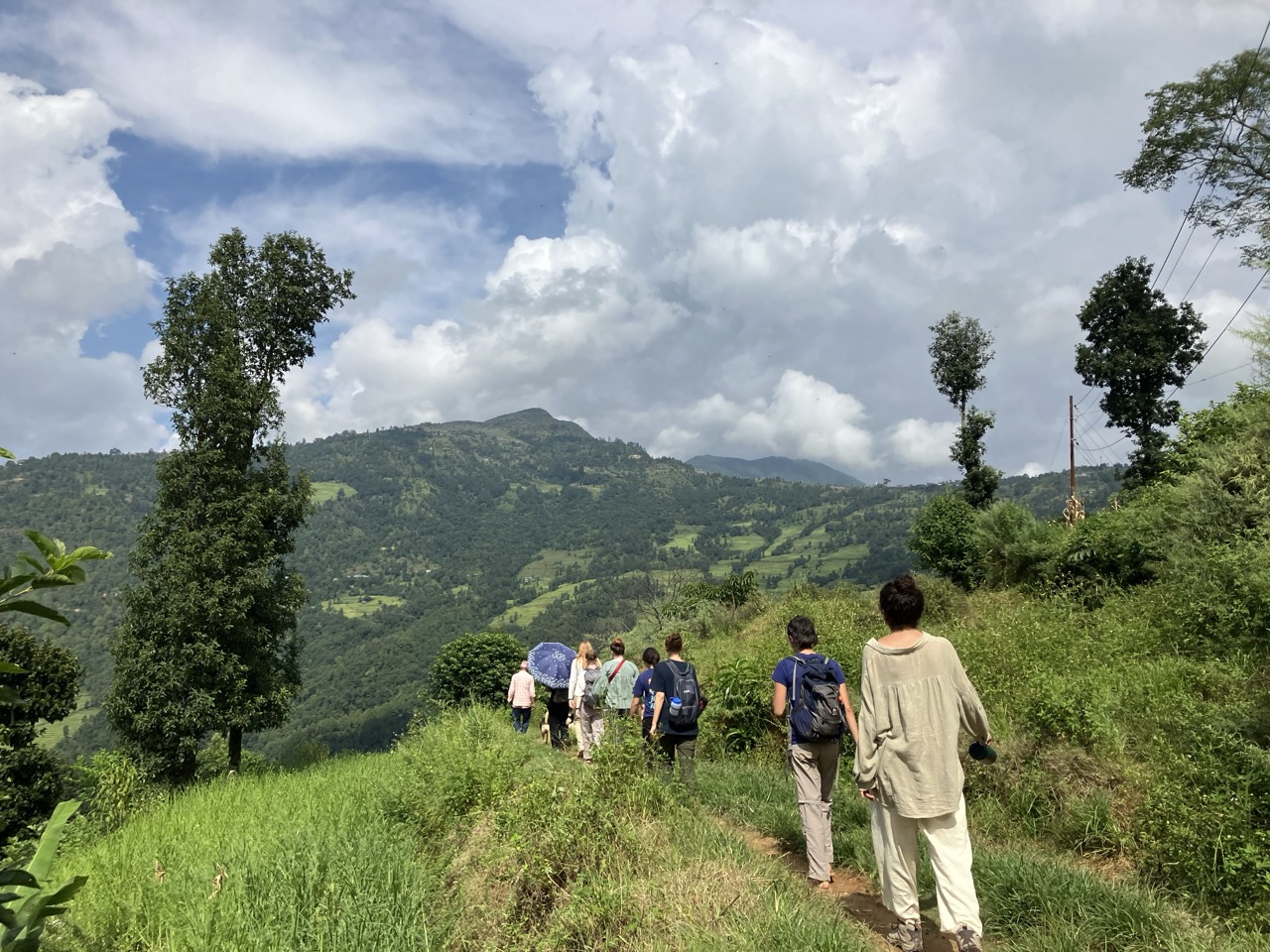Written by India & Nepal Students, Ava Mendler and Stephanie Jones
After our restful and rejuvenating time at the Sri Aurobindo Ashram, we embarked on a wild four-hour jeep ride through the winding roads of Nepal and arrived at Conscious Impact (aka camp), our new home for the next eight days.
I (Steph) arrived at camp riding the high of the sick jeep ride. The first thing on the docket when we got to camp was a tour. Conscious Impact is a several-acre camp perched on the side of a mountain. It’s made up of earthen and bamboo structures that are integrated into the thick, lush, forest that coats the steep terrain. Half our group stayed in the nest which is a row of simple rooms made of natural building materials. The other half of our group stayed in tents. My room in the nest presented the greatest personal challenge in the form of the numerous spiders that roamed the walls. They came in a wide variety of makes and models including chunky, lanky, stocky, jumping, and straight-up giant. Besides the spiders, the nest was great though.
There is a very strong emphasis on community living at Conscious Impact and that can be felt in everything from the way the organization interacts with their local partners to how meals are organized. The common space includes a large kitchen where all of our meals at camp were prepared. The people living at the camp were divided up into three teams. Every day we were at camp one team started making breakfast at 6 am. The other two teams took care of dinner and dinner dishes. Lunch and snacks were prepared by a local woman named Parvati who made some bussin dal bhat. Cold, outdoor showers were on the move all week and provided some respite from the intense heat and humidity during the day.
I (Ava) can confidently say that no one could have quite expected what we were getting ourselves into after our luxurious stay at the Ashram. The biggest shock for me was the toilets. Or should I say, holes in the ground. I thank god every day I did not fall straight into the poop and sawdust abyss. I was fascinated at the amount of ongoing projects happening all over camp as if the whole camp was a work in progress and constantly evolving. I felt instantly welcomed by kind faces here and got so excited when I saw a pair of gymnastic rings and a guitar. I didn’t even care that it had five strings. I could work with that. The whole experience started to feel like I was at camp, and I loved sleeping in a tent.
We spent two nights in camp before heading to homestays that were about a 15-minute walk away in the village of Takure.
My (Ava’s) homestay experience was extremely memorable. After walking down the side of a mountain, we found ourselves in a small rural village. Iona and I each took a deep breath as we walked inside and prepared to meet our host family. We were greeted with kind faces and immediately served a ginormous portion of dal baht (which was amazing), and luckily we had the camp dog, Roksha, at our homestay to feed leftovers to. It was scary at first, but we immediately started to feel welcomed and comfortable when Amma (the older woman at our homestay) started laughing and giggling with us. We soon realized our hosts knew about as much English as we knew Nepali. It was hard to communicate at first, but with some smiling, laughing, pointing, and gesturing, we were able to get our most important points across. My personal favorite moment was when we pointed to the glutenous Nepali bread and then to my stomach, then to the toilet, implying the gluten would give me diarrhea and thus, I couldn’t eat it. The following two nights, we had Sarah (and two other dogs) join us, and we had a lot more fun giggling with our hosts and trying to communicate. Amma loved it when we said “Pugcha, pugcha!” meaning “enough, enough!” when they tried to give us even more food to add to the Everest-sized pile of rice on our plates. Maybe someday I will show up to their farm again, and I know for sure they will welcome me with open arms and give me some rice. I would love to go back.
I (Steph) was paired with Mae and we stayed in the home of an incredibly welcoming family. There was always a rotating cast of characters within the house. It seemed as though all the houses nearby were owned by and filled with extended family that would habitually swing by throughout the evening with a familiarity uncommon for American families. It was only on the last night that I sort of pieced together the family tree due to the sheer volume and comfortability throughout the whole bunch. Within our house alone there were four generations, the youngest being a sweet 4-year-old who called us didi (big sister). As is regular for Nepali families, our host sister’s husband was abroad working in Dubai. I learned how to make Chiya and Rotis and we had some of the best daal bat of the entire trip. The family had a large vegetable garden, chickens, cows, buffalo, and goats. One morning I emerged from our room onto the roof to find two goats had climbed the stairs on the hunt for corn. On the last night, a family gathering sporadically built up on the porch of the house. Soon there was a rambunctious game of spoons (without spoons, putting hands in the middle instead). Whoever lost had to dance for everyone. The laughter and love that our host family held was contagious. They truly made me feel so welcome and comfortable.
During the day, whether we were sleeping at the homestay or at camp, we did a variety of projects for conscious impact.
One of my favorite projects I (Ava) worked on at camp was the construction of stairs using “earth bags”. What are earth bags, you might ask? Well, I’ll tell you. They are these really cool canvas bags that you fill with dirt and soil you can dig up from the ground, and you pat them down, otherwise known as “tamping” and you can build up on them and cover them with concrete. For my first experience with bio-construction, I rate it a 10/10. I also cannot stress enough how much I loved working on the greenhouse at conscious impact. We got to climb up and sand off the old rust on the frame of the greenhouse, and repaint it. My personal favorite activity was zig-zagging metal wires through the posts of the greenhouse to attach the UV protective covering to the frame. I simply loved how at the end of the work day, the conscious impact community would come together and cook/eat dinner, laugh, and hang out. Nothing beats a nice kitchen dance party. I loved having a pizza party and fully letting loose, having fun dancing with everyone. Credit to Nina for teaching us how to salsa! I still have to work on my hip movements, but we’re getting there. We played an amazing game of charades (don’t mention human centipede, we were all a little scarred), and shared our gratitude. We met so many lovely people here, and I could totally see myself coming back to camp somewhere down the line. I felt so welcome at conscious impact and I am so grateful for that.
My (Steph’s) favorite activities included harvesting bamboo, learning to weave with rice stalks, and painting classrooms at a local school. For the bamboo harvesting, we are working with the building team to get bamboo for use in structures around the camp. We used machetes and axes to cut three-year-old bamboo stocks from a bunch up a hill. We then had to pass the bamboo down the hill and take it up the road. The group got very into swinging blades around and shoving bamboo through the woods. Another day we went to a local weavers house to learn how to weave coasters. Sitting on the ground and watching her work we learned with very minimal verbal instruction due to the language barrier. It was fascinating how fast and neatly she could wrap a pile of hay into a beautiful design. After some starting struggles everyone in the group walked away with a complete coaster. Sitting around and talking while weaving was very calming. Our big outing this week was a 45-minute jeep ride down to an elementary school where we painted the alphabet and other assorted designs in two classrooms. The English alphabet was slightly Nepali themed with momos for M and yak for Y. Painting the actual Nepali alphabet required a Google search or two. It took us the whole day to complete and the teamwork was on point. I LOVED the jeep ride to and from painting. The views from the narrow roads were incredible with mountains and rice paddies the whole way. I got a sense of the Nepali countryside just by observing the villages we passed through.
Every night the camp inhabitants gathered for dinner and a gratitude circle. This period got us in the mindset of being reflective and intentional with our time at camp. There are dozens of things the group was grateful for throughout our time at Conscious Impact so we have only pulled a few highlights. First and foremost all the amazing people we got the privilege to meet and work with. From other volunteers to all the staff there were so many gems. A special gratitude to Tina, Archu, Santosh, and Qumari. Besides the camp community, the people we got the privilege to interact with in the local community were truly awesome. A lot of gratitude to our homestay families and the local farmers. Everyone in this space was so friendly, helpful, and patient. Some more niche and also very important gratitudes include locked gluten-free food, buffalo milk, yak cheese, and guava. The dogs were also a big highlight of the week. Pongri, Roksha, and Covita were always around to provide entertainment and they would join us as we worked. Pongri was the baby and the troublemaker, Covita was the matriarch, and Roksha was the sweetie pie.
In closing a poem from Ava:
8 wild women, plus Anand
salaciously sexy, and of whom I am fond
greenhouse fun
under the sun
machete goals
rusty poles
Daal bat scoops
squatting poops
perfectly content
sleeping in a tent
Tina is our G
Archu is our queen
Santos is our leg
Now I eat passion fruit on the reg
To stay here I would beg
For without conscious impact
I would be as lost as last year’s easter egg
Consciously impactful
Impactfully conscious

